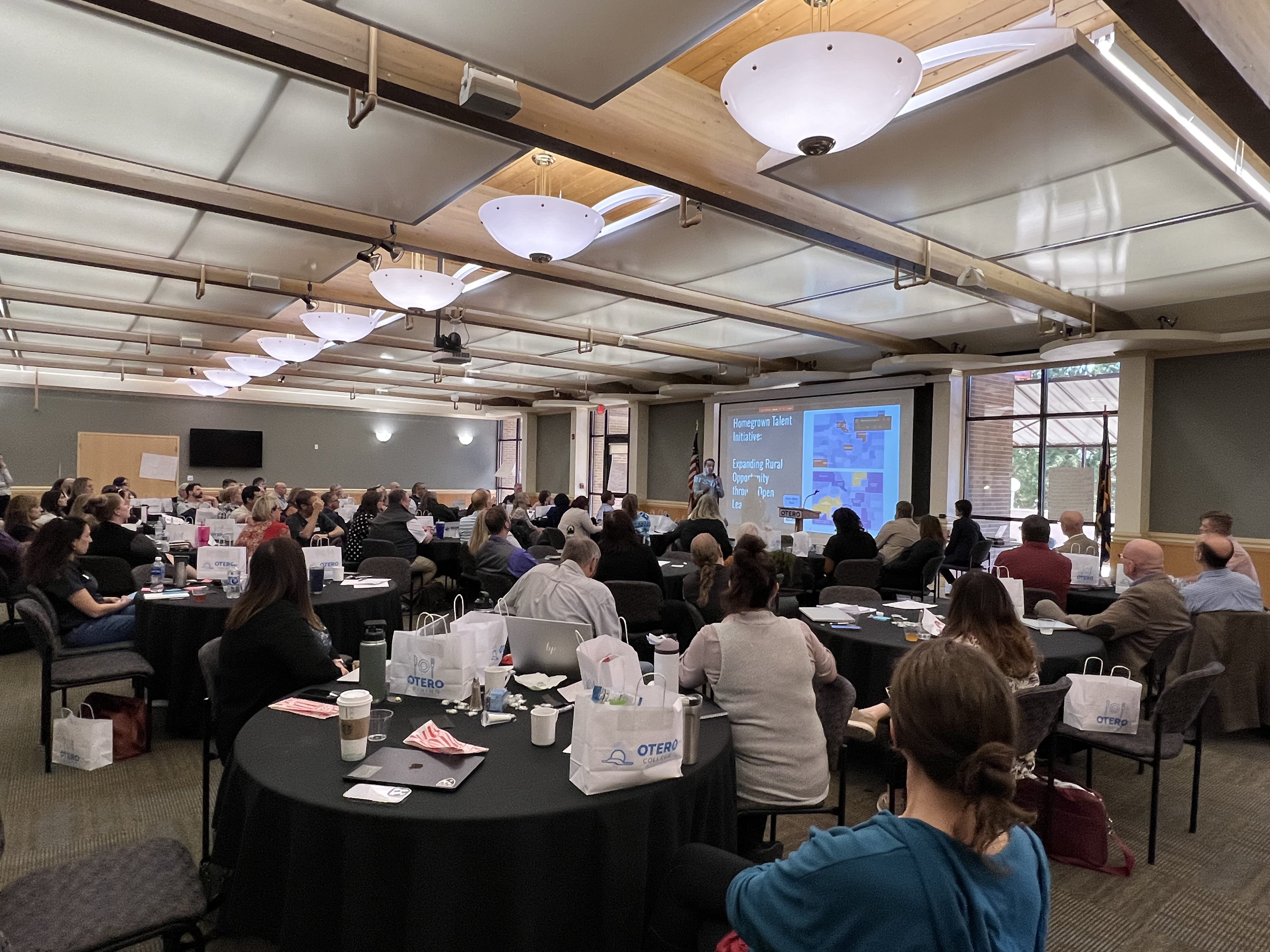Colorado’s community colleges will continue to play a critical role in meeting unprecedented workforce demands, according to data and recommendations from Colorado’s 2023 Talent Pipeline Report.
The annual publication, published by the Colorado Workforce Development Council (CWDC), covers labor market and workforce trends that affect Colorado’s economy. With more than two jobs available for every unemployed worker in the state, Colorado must look to community colleges to develop qualified talent quickly, officials said at a launch event last week.
“As a state, we need to equip workers and learners with the skills they need to succeed and meet the needs of our Colorado businesses,” said Governor Jared Polis in a video message. “Blurring the lines between K-12, postsecondary education and training, and the workforce can help us succeed.”
Seizing Opportunities
Although Colorado boasts a strong economy today, lingering skills gaps could undermine its performance in the future. More than 75% of top jobs—those with high growth rates and pay a living wage—require education or training beyond high school, said Caitlin McKennie, the talent pipeline economist for the CWDC and the report’s lead author.
“The demand for talent and the job market has remained at historically high levels for both Colorado and the U.S., and many employers are still struggling to find the skilled workforce they need to manage thriving businesses,” she said. “Robust training, educational initiatives, and strategies to recruit under-tapped talent from traditionally marginalized groups will continue to be crucial.”
Some of the fastest growing fields include healthcare and technical services, which are expected to add 35,000 and 27,000 new jobs over the next five years, respectively, McKennie said. The CWDC also hopes to develop the state’s advanced manufacturing field, which generated $29.5 billion in economic impact last year, according to CWDC managing director Lee Wheeler-Berliner.
“The annual wage to manufacturers in Colorado sits about 43 percent higher than the average annual wage for all industries, and many of those occupations and roles do not require a bachelor’s degree,” said Wheeler-Berliner. “We need to think about how we can continue to invest in that workforce, create opportunities, and connect people” to that industry.
Rapid advancements in artificial intelligence will create even more shakeups, McKennie added. Employees in low-wage jobs are most at risk of relocation and much more likely to need retraining than those in high-wage roles.
“An additional 12 million occupational transitions are estimated to be needed within the next decade, reinforcing the need for individuals to seize opportunities to reskill, upskill, or utilize transitional skills,” she said.
High Demand, High Opportunity
To address these challenges, state leaders recommend scaling strategies pioneered across the Colorado Community College System (CCCS). CCCS has long used Talent Pipeline data to align training with regional economic needs and codesigns programs with industry experts, ensuring students can move into top jobs.
This career-connected approach is why the state invested tens of millions of dollars to launch Care Forward Coloradoand Career Advance Colorado—programs that make training free for community college students in in-demand fields, said Dr. Angie Paccione, the executive director of the Colorado Department of Higher Education. The initiatives have already trained thousands of Coloradans for jobs in healthcare, forestry, and other professions.
“We’re very excited about the work of our community colleges and area technical colleges with the Governor’s initiative around zero-cost training and education,” she said. “If you want a job in these areas where we have high demand and high job opportunity, right now you can do that at zero cost.”
Dr. Paccione also highlighted CCCS’s CO-HELPS healthcare apprenticeship program, which has trained nearly 5,000 Coloradans through an “earn while you learn model,” and Concurrent Enrollment, of which CCCS is the largest provider in Colorado. By getting a head start on college, more students have a “line of sight” to their eventual careers, she said.
“82% of students who are doing Concurrent Enrollment continue in their postsecondary education as opposed to the 37% who don’t,” Dr. Paccione said. “We really want to push Concurrent Enrollment so students get those skills, competencies, and confidence.”
Engaging Employers
As the state ramps up work-based training and education, leaders hope to build on strong industry partnerships forged by CCCS programs.
One example is Skill Advance Colorado, a joint program between CCCS and the Colorado Office of Economic Development and International Trade (OEDIT). Each year, the program delivers hundreds of custom trainings that support thousands of new and incumbent workers, said OEDIT executive director Eve Lieberman.
She also applauded the efforts of institutions like CCCS to keep pace with emerging industries.
“Schools are changing curriculum within a matter of months to develop and grow diverse industries, such as quantum, the clean energy space, and the semiconductor space,” Lieberman said. “There’s so much innovation happening there across the state, and it’s exciting to be a part of.”
Joe Barela, the executive director of the Colorado Department of Labor and Employment, echoed the need for increased industry collaboration in his closing comments.
“We need to make sure that we have avenues for all workers to access reskilling, upskilling, and next- skilling, and that employers are engaged in that process so that they can be relevant to career-connected education and training.”


